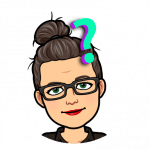
The Creation of our Group
The creation of our group may have been, according to Belbin (2010) doomed from the start due to the way the group members were selected (which was, presumably and due to the constraints of our online study, fairly random). The creation of a balanced team is very challenging (as detailed in my previous post) and some of the problems that we are showing (mere cracks really, not necessarily conflicts) are indicative of the challenges of creating that balance.
Roles and Participation:
I think our group at this stage of the process are struggling to identify our roles. The person who previously accepted or chose the role of submitting the final ‘Case Study 3’ group post, was displaying a need to maintain that role in the ‘Case Study 4’ post (although she had put her hand up at the start to say that she would not be able to participate as much in case study 4 due to her workload constraints and I was the person in charge of the final submission this week). Perhaps her need to exert herself was a result of her feeling like she had something to prove e.g perhaps she was not happy with her level of participation (Roberts, 2012)?
I know I was not 100% happy the previous person in charge of the submission, as she cut several sentences from my work without checking with me. Rather than approach her regarding this, I chose to defer on the side of caution and recognise that, at the end of the day, working together as a team was more important than the integrity of my work being recognised.
Moreover, leading by example, when it was my turn to be responsible for the final submission, I was very careful to only lightly edit the other team member’s work so that it maintained a consistent and positive flow (e.g. changing the word ‘staff’ to ‘team member’ or ‘library team’). When the person in charge of the previous submission questioned this and suggested I edit the text, I explained why I had not ‘micro edited’ the work of other team members as it can become ‘problematic.’ I am not sure if she got the message but I am hopeful that it doesn’t cause further conflict.
Communication:
The lines of communication are also having a negative impact on our group dynamic (Roberts, 2012). Aside from the communication being 100% electronic (and therefore limited in volume, tone and body language) one of the participants bar myself and one other have contributed to the ‘getting to know you’ forum in our group. In a physical / face-to-face setting, everyone would join in on the discussion about themselves less likely to just sit silently and ignore the conversation like they are in online communication.
Furthermore, the communication is challenging as there are so many options. Some are posting their submissions in the wrong case study and feeling like there are too many areas where the submissions could go (the blog, the discussion the wiki or email).
Where to from here?
The creation of my team in the future will need careful consideration from the employment stage right through to the project completion stage.
In terms of communication, I’m not sure how to make it more clear except to say that a better understanding of where we are meant to chat versus submit our individual work could be more narrow? Maybe if everything was done in either the discussion section as a draft and then in the blog as a final and not anywhere else?
I think, in the future, I might need to be more assertive–rather than avoiding the conflict (Plocharczyk, 2013) and when it is my turn to be ‘in charge’ I lead the team in identifying everyone’s roles or at least helping them be more aware of the possible range of roles that we take on in groups at any given time (such as those listed in my previous post from Roberts, 2012; Porteus, n.d.):
 Leadership Thought: Is the case study group work about learning the leadership content better or is it a means in which to learn how to interact in the group as we mean to go forward in our own library or school teams?
Leadership Thought: Is the case study group work about learning the leadership content better or is it a means in which to learn how to interact in the group as we mean to go forward in our own library or school teams?
References:
Belbin, R. M. (2010). The art of building a team. Chapter 9, pp. 97-106. Team roles at work (2nd ed.). Retrieved from ProQuest Ebook Central.
Plocharczyk, L. (2013). Managing conflict and incivility in academic libraries. In K. Blessinger & P. Hrycaj (Eds.), Workplace culture in academic libraries. Retrieved from ProQuest Ebook Central. [Elsevier Science version]
Porteus, A. (n.d.). Roles people play in groups. Stanford University. Retrieved March 5, 2017 from https://web.stanford.edu/group/resed/resed/staffresources/RM/training/grouproles.html
Roberts, R. (2012, September 12). How identifying the different roles can help groups work better together [Blog post]. Retrieved from https://elt-resourceful.com/2012/09/12/how-identifying-the-different-roles-we-play-can-help-groups-work-better-together/
